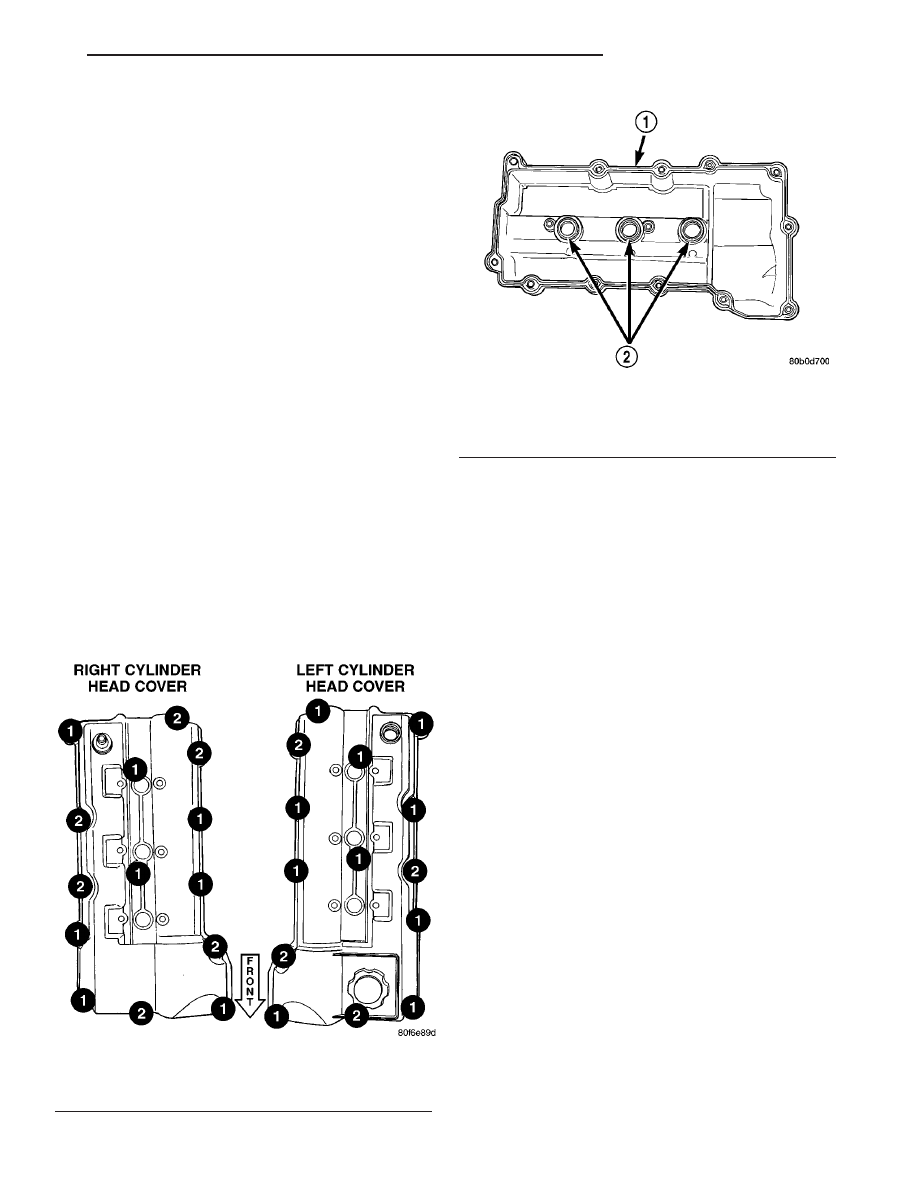Chrysler Sebring, Stratus sedan, Sebring Convertible. Manual - part 520

CYLINDER HEAD COVER -
LEFT
REMOVAL
(1) Disconnect negative battery cable.
(2) Remove upper intake manifold (Refer to 9 -
ENGINE/MANIFOLDS/INTAKE
MANIFOLD
-
REMOVAL).
(3) Disconnect electrical connectors from ignition
coils and capacitor. Reposition electrical harness.
(4) Remove ground strap from cylinder head cover
stud.
(5) Disconnect electrical harness retaining clips
from cylinder head cover studs. Reposition electrical
harness.
(6) Remove fastener attaching ignition coil capaci-
tor.
(7) Remove ignition coils.
(8) Loosen all cylinder head cover fasteners (Fig.
30).
NOTE: Cylinder head cover attaching bolts are cap-
tured to the cover.
CAUTION: Make certain the double ended studs in
the center of the cylinder head cover are loose
before attempting to remove cover (Fig. 30).
(9) Remove cylinder head cover.
INSTALLATION
(1) Clean cylinder head cover and both sealing sur-
faces. Inspect and replace gaskets as necessary (Fig.
31).
(2) Install cylinder head cover and hand start all
fasteners. Verify that all double-ended studs are in
the correct locations as shown in (Fig. 30).
(3) Tighten cylinder head cover attaching bolts and
double-ended studs to 12 N·m (105 in. lbs.).
(4) Install ignition coils.
(5) Install ignition coil capacitor and fastener.
(6) Connect all electrical connectors and harness
clips.
(7) Install ground strap to cylinder head cover
stud.
(8) Install upper intake manifold (Refer to 9 -
ENGINE/MANIFOLDS/INTAKE
MANIFOLD
-
INSTALLATION).
(9) Connect negative battery cable.
Fig. 30 Cylinder Head Cover Fasteners
1 - DOUBLE ENDED STUDS
2 - BOLTS
Fig. 31 Cylinder Head Cover Gasket and Spark Plug
Seals
1 - ONE PIECE GASKET
2 - SPARK PLUG WELL SEALS
JR
ENGINE 2.7L DOHC
9 - 183